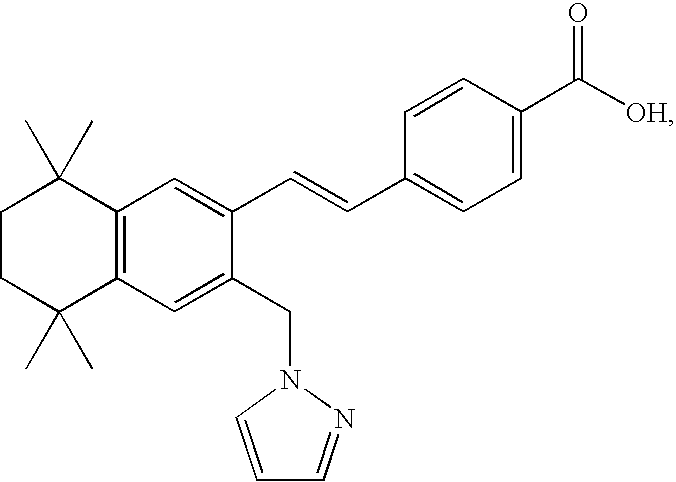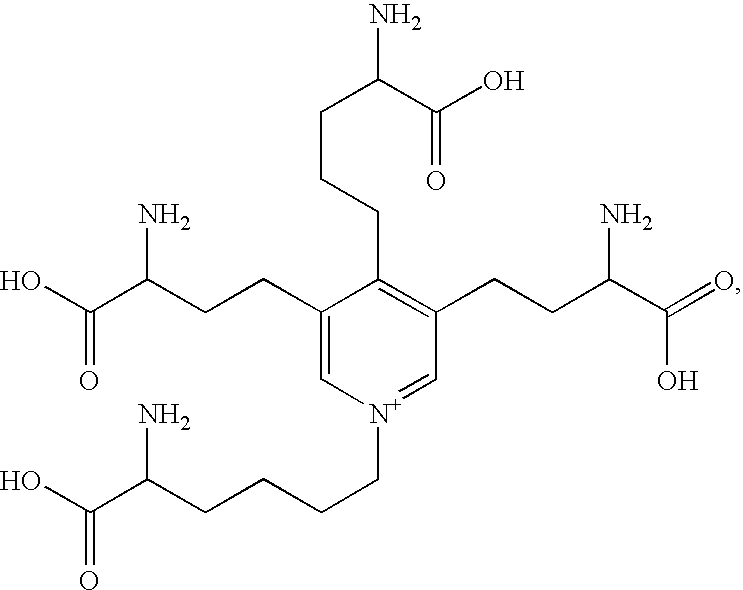Methods for assessing emphysema
a technology of emphysema and emphysema, applied in the field of emphysema assessment methods, can solve the problems of destroying the normal protective mechanism, affecting the normal functioning of the body,
- Summary
- Abstract
- Description
- Claims
- Application Information
AI Technical Summary
Problems solved by technology
Method used
Image
Examples
example 1
Biomarkers in Rats
[0081] (A) Rats were exposed to cigarette smoke (10 cigarettes / day) for 8 months, following a smoking protocol similar to that of A. F. Ofulue et al., AJP Lung Cell Mol Physiol (1999) 277:97-105. Following the 6 month exposure, 14 rats were sacrificed, and samples of BAL, plasma and lungs obtained and frozen, along with samples from 17 naïve rats. Rats in other arms of the study were administered doses of drug candidates or vehicle for 30 days. After 30 days, BAL, plasma, and lungs were collected from the remaining animals.
[0082] BAL was examined for desmosine, SpB, and MMP9. Lungs were subjected to histological analysis, and mRNA expression analysis by RT-PCR. Untreated smoking rats exhibited elevated desmosine and MMP9 levels in BAL, upregulated expression of MMP9, IL-6, IL-8 mRNA, and down-regulated expression of IGFBP2, SpB, SpA, and VEGF. Treatment with active drug candidates decreased elastin fragments in BAL (92%), decreased MMP9 and MMP12 levels (50%), de...
example 2
Biomarkers in Humans
[0087] A randomized, multi-center, double blind, parallel-group study was designed to asses the safety of daily doses of a drug candidate (vs. placebo) in humans with moderate to severe emphysema, over four weeks. A total of 86 patients were enrolled, of which 24 were also randomized to examination of biomarkers. All non-control patients were required, inter alia, to be 50 years of age or older, have symptomatic emphysema at stable clinical condition, exhibit physiologic evidence of moderate to severe emphysema (DLCO1≦60% predicted after bronchodilator administration, adjusted for gender, age, height, and hemoglobin), exhibit breathlessness of at least 1 on the Modified Medical Research Council Scale, and have radiologic confirmation of emphysema upon visual examination of a chest CT scan. Patients were excluded for, inter alia, depression, psychiatric disorders requiring medication or hospitalization, solitary nodules in the lung requiring further medical inter...
PUM
| Property | Measurement | Unit |
|---|---|---|
| time | aaaaa | aaaaa |
| time | aaaaa | aaaaa |
| elasticity | aaaaa | aaaaa |
Abstract
Description
Claims
Application Information
 Login to View More
Login to View More - R&D
- Intellectual Property
- Life Sciences
- Materials
- Tech Scout
- Unparalleled Data Quality
- Higher Quality Content
- 60% Fewer Hallucinations
Browse by: Latest US Patents, China's latest patents, Technical Efficacy Thesaurus, Application Domain, Technology Topic, Popular Technical Reports.
© 2025 PatSnap. All rights reserved.Legal|Privacy policy|Modern Slavery Act Transparency Statement|Sitemap|About US| Contact US: help@patsnap.com


